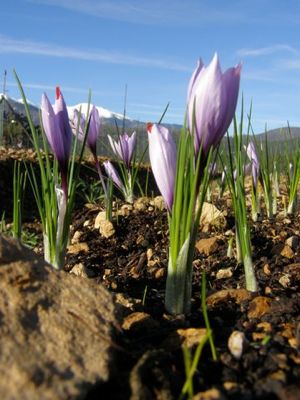Saffron in the Pyrenees
By Lynn Hall
To find the best quality saffron you do not need to travel far. In the hills above Calmeilles, at the feet of Canigou, Laurent Dieval and his wife Hilde have been growing this intriguing flower since 2011.
Each year Laurent is painstakingly expanding the area farmed, although the actual volume produced is very much at the mercy of the weather. He has approximately 82,000 bulbs planted – all by hand.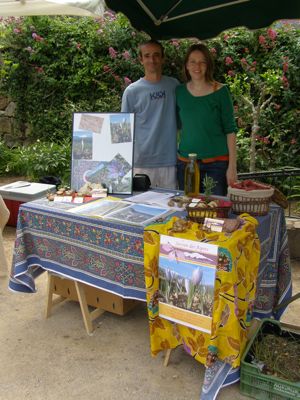
Farming is never easy, but here the foremost natural threats include wild boars, deer, hares and mice. To try to protect the saffron bulbs it has been necessary to install elaborate fencing. Sanglier can dig, deer and hares can leap, and mice can go where they please.
With almost 20 years of experience, and qualifications in horticulture, Laurent had a long-held ambition to start his own enterprise.
Working for others in the Aspres since 2001, growing fruit and vegetables, gave him a good understanding of the climate and the conditions. With the support of his Belgian wife Hilde he searched across the PO for suitable land to buy until finding the beautiful fields above Calmeilles, and then to rent a home in the village of Oms.
Saffron grows best between 400 and 800 metres of altitude, on south-facing slopes on well-drained but fertile soil.
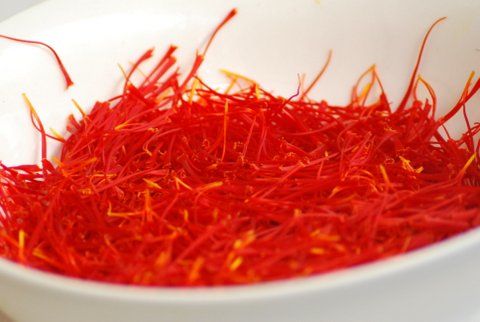
Unlike the well-know spring bulb, the saffron crocus (crocus sativus) blooms in the autumn.
The harvest takes place over 6 weeks during October and November. The whole process is very labour-intensive and a real labour of love.
Early each morning that day’s flowers are picked before they fully open.
The deep golden orange filaments – just 3 per flower – are then pinched out of the petals and put dry the same day.
The day I visited the ground was littered with heaps of discarded flowers. An experienced worker can deal with around 1000 to 1200 flowers for picking and 500 to 600 flowers for pinching per hour. During the drying process the saffron loses around 80% of its weight. 130 to 250 flowers are needed to produce just 1 gram of dry saffron.
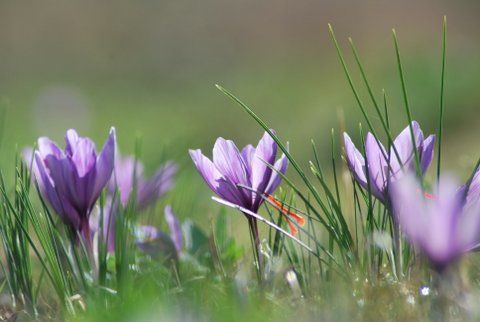
No chemicals are used in the production of Safran des Aspres, as quality is of prime importance for artisan producers such as Laurent. He is currently working towards organic status, and from 2014 has used the ‘Bio’ label. This season’s crop will be ready just in time for the Foire au Gras (Christmas markets).
Stored correctly, in sealed glass jars and away from direct light and humidity, saffron can be kept for up to 3 years. Laurent’s advice is to only buy saffron when it is sold in whole filaments. Powdered saffron is too vulnerable to being bulked up with additions such as turmeric or paprika.
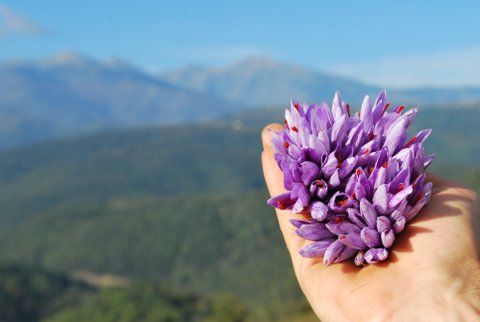
The climate and soil conditions are ideal in the P.O. Elsewhere the major producers are primarily Iran, then Greece, Morocco, Spain and Kashmir. Much smaller quantities are produced in Afghanistan, Italy – and even in Austria, England, Germany, Switzerland and a number of other countries.

Throughout history, since ancient times and across the whole world, saffron has been highly prized for both its culinary and its medicinal properties.
The ancient Greeks, the Minoans, Assyrians, Chinese, Egyptians, Romans – for over 3,000 years the many virtues of saffron have seen its use spread to virtually every country.
In England it was traditionally grows in East Anglia in previous centuries, with the Essex town of Saffron Walden named for its speciality crop.
In the 17th century Culpepper’s Herbal said ‘saffron is endowed with great virtues’ – but dosage is critical, so always consult a doctor or qualified herbalist when thinking of medicinal use.

It is possible to visit the saffron farm at any time of the year – even if it is at its most spectacular during the flowering season. The safranière is situated in a beautiful natural site and makes a great destination for a hike in the hills.
Using Saffron
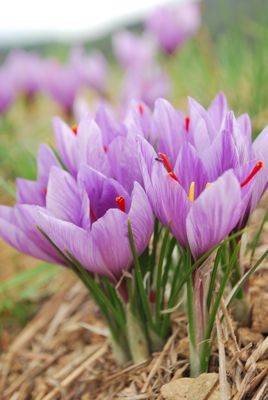 The golden rules:
The golden rules:
1). Saffron is powerful – you only need 3 to 6 filaments per person in sweet recipes, 6 to 9 filaments per person for savoury dishes.
2). Before using infuse in a small amount of warm liquid (water, milk, fruit juice etc) for at least 2 hours, or even overnight. This allows the subtle flavours, scents and colours to permeate the liquid. To release the maximum amount of colour, gently crush the filaments. If using in cream or egg white it is a good idea to infuse overnight in the `fridge.
3). Add the infusion towards the end of the cooking time as saffron does not benefit from long or very hot cooking.
Where to buy
Farmers markets and Christmas markets
How much?
0.2gr = 7€ – for around 12 to 20 portions Prices ( 2014)
0.5gr = 16€ – for around 30 – 50 portions
1 gram = 31€ – for around 60 – 100 portions
Info: Hilde, Laurent’s wife, speaks Dutch, English and a little German.
Feel free to contact them in one of these languages
Safran des Aspres
Laurent DIEVAL, Producer
Carrer del Roc del Ram
66400 Oms
Tel. 04 34 29 21 45
Mobile 06 62 16 24 19
Safran.des.aspres@gmail.com
www.safran-des-aspres.com
You will also find Laurent and Hilde at several of the TRUFFLE MARKETS

